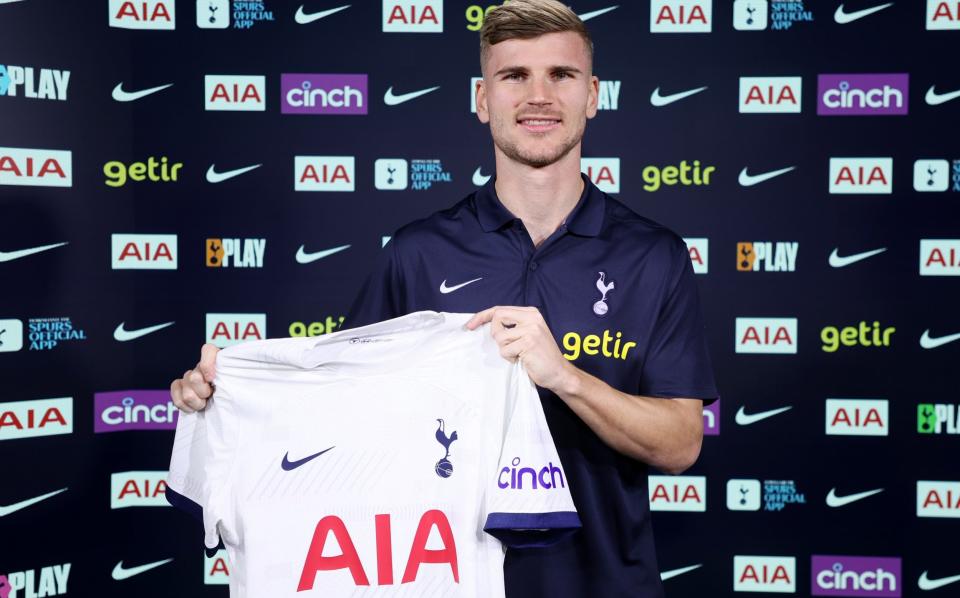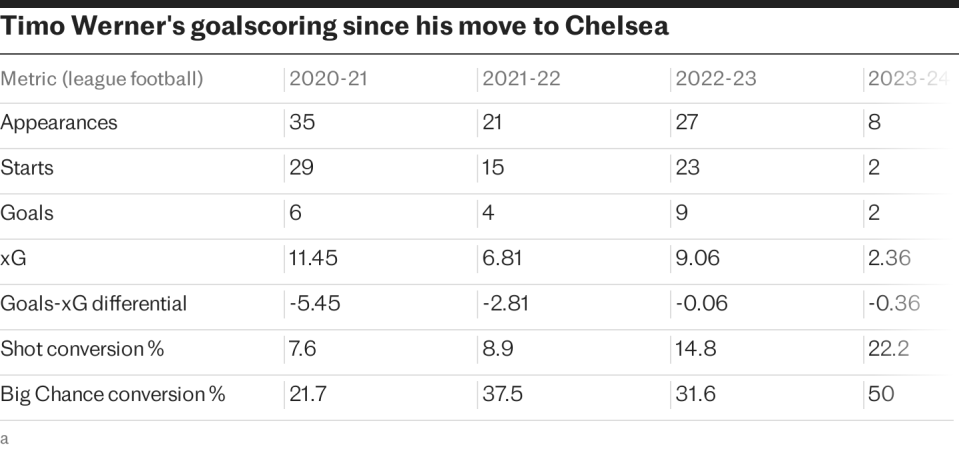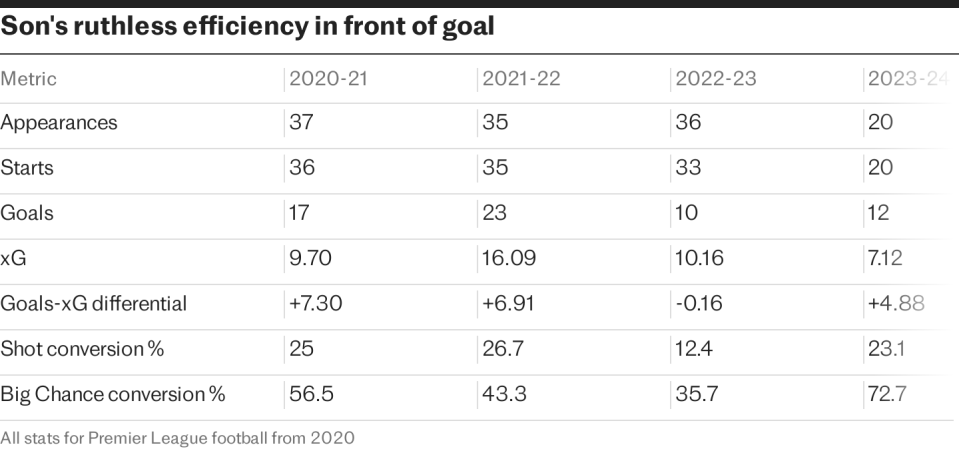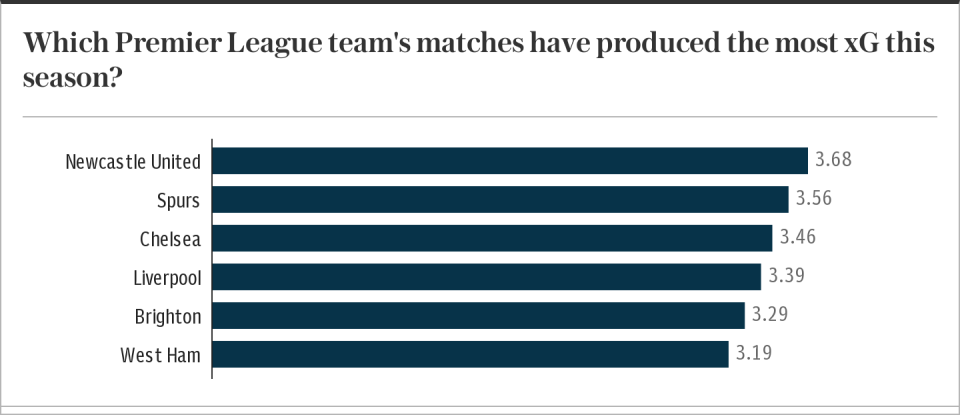Timo Werner can fill Son Heung-min-sized void after signing loan deal with Spurs

Tottenham Hotspur have confirmed the most eye-catching piece of business of the January transfer window so far by signing former Chelsea forward Timo Werner on loan with an option to buy.
Ange Postecoglou has managed to make Spurs a dynamic attacking force despite the summer sale of Harry Kane, but the club are still in the process of rebuilding their forward line following the loss of their record goalscorer.
Only Erling Haaland and Mohamed Salah have scored more Premier League goals than Son Heung-min this season, who Spurs could be without for six weeks if South Korea go all the way at the Asian Cup.
Werner’s two seasons at Chelsea were underwhelming following a £47.5 million transfer from RB Leipzig in 2020, the German club then buying him back for £25.3 million two years later.

The forward has not set the Bundesliga alight since returning, but there are reasons to be optimistic about the stylistic fit under Postecoglou at Spurs.
Similarities with Son...but one glaring difference
One explanation for Werner’s struggles at Chelsea was that they were unable to pin down his best position. Was he better through the middle, off the left, or as part of a front two?
However, the fact Werner can be used as both a central striker and a left-winger is unlikely to worry Postecoglou, because they are the two positions that need covering in the absence of Son.
Richarlison can also play in both roles, with Postecoglou utilising the versatility of his attacking options. Against stronger opposition, notably away at Arsenal and Man City, Son has led the line impressively in more counter-attacking displays. Against teams who bank up behind the ball against Spurs, Son can move left with Richarlison at No 9 to squeeze an extra goalscorer on the pitch. Werner would be part of this rotation.
Postecoglou likes to keep his wingers high and wide, with Tottenham’s full-backs driving through into attacking midfield positions inside, which means his wide players need to possess the explosiveness to cope in isolation and capitalise on the one-on-ones the system creates.
Like Son, Werner certainly has the speed Tottenham’s head coach seems to prize. Even when starting left, both players can threaten the back of opposition defences with out-to-in runs. One of Werner’s best performances for Chelsea came in the 2021 Champions League final, when his movement stretched Manchester City’s back line, clearing space for his team-mates.
Comparing Son’s touch map this season with Werner’s from last season, when he played more frequently for RB Leipzig, we see two players who operate in similar zones. Son’s touches come slightly higher up the pitch in an enterprising Spurs team.
The big difference between the two players however, is their efficiency in front of goal. In each of the last four league seasons, Werner has underperformed expected goals having significantly outstripped his underlying data in the season before he signed for Chelsea.
His debut season at Stamford Bridge, which lost him the goodwill of many fans, was a particular cold snap. Werner scored just six Premier League goals from 11.45xG, with a pitiful shot conversion rate of 7.6 per cent. He was on the end of 23 ‘big chances’ as defined by Opta, and missed 18 of them. Werner has not been as profligate since, but remains a below-average finisher.

By contrast, in all but one of his Premier League campaigns (last season) Son has overperformed xG, often significantly so. In three of the last four seasons, Son’s shot conversion rate has been above 20 per cent with his big chance conversion rate more than 40 per cent in three of those four seasons. Werner can closely replicate Son positionally, but not his near-peerless finishing.

Werner’s struggle to bounce back in the Bundesliga
Clubs are looking for January recruits who can contribute immediately, and Werner ought to have enough experience to avoid an extended adaptation period.
However, Spurs are signing a player who has started just two Bundesliga games this season and one they will have to nurse back to form.
Werner produced a respectable nine goals and three assists in 23 league starts for RB Leipzig last season, but has just 204 league minutes under his belt as well as 50 minutes’ worth of sub appearances in the Champions League. Werner’s paucity of minutes makes appraising his output this season almost obsolete.
A return to Germany was a chance for Werner to rediscover the form that first attracted Chelsea, but his shot volume and xG per 90 minutes have not recovered to the levels seen before his move to England.
RB Leipzig are far from dominant in Germany, but were approximately the third-strongest team in Bundesliga last season, and sit fourth in the league for both points and expected goal difference this season. Their standing in Germany is not a mile away from where Spurs sit in the Premier League.
One area where Werner continues to stand out statistically is progressive passes received. According to the website FBref, Werner ranks in the top five per cent of forwards across Europe’s big five leagues in this area, which suggests his movement is still capable of separating him from his markers.

Spurs’ chaotic games could suit German
In Werner’s two seasons under Frank Lampard and Thomas Tuchel, Chelsea averaged a touch more than 60 per cent possession in the Premier League. Only Manchester City and Liverpool had more of the ball. Teams tended to sit deep and absorb pressure against Chelsea, reducing the space in behind where Werner loves to operate. Tuchel’s Chelsea were a very ordered and structured side whose games tended to be low-scoring, limiting their potency across a league season but making them a successful cup team.
Spurs also have plenty of the ball, but their football under Postecoglou is more direct and their matches more back and forth. This ought to be to Werner’s liking, who suits early service rather than facing a set defence from a standing start.
Only Newcastle United’s fixtures have produced more expected goals, at both ends combined, than Tottenham’s this season at 3.56xG per game. Spurs get themselves involved in helter-skelter contests, and almost seem to encourage them, which should give Werner room to breathe after a claustrophobic tactical assignment at Chelsea.

Can he keep himself onside?
You might recall that Werner’s habit of running offside became something of a running joke at Chelsea, with numerous goals disallowed because he failed to time his runs correctly. In his first season at Chelsea, he was flagged offside 42 times in all competitions, more than any Premier League player.
This has also been a source of frustration and self-deprecating humour among Spurs fans, who have seen Richarlison ‘score’ several goals that were subsequently chalked off for offside after a VAR review. In the Premier League this season, only Darwin Nunez has been caught offside more frequently than Son. Only Liverpool and Manchester United have been caught offside more times than Spurs as a team.

In Werner, Spurs have added another player who, as Sir Alex Ferguson once said of Filippo Inzaghi, was born offside. This is a function of Werner’s style and strengths rather than a damning fault, and can reap huge rewards if he can stay on the right side of the line often enough. Spurs will certainly not lack forwards looking to live on the shoulder of the last defender.

